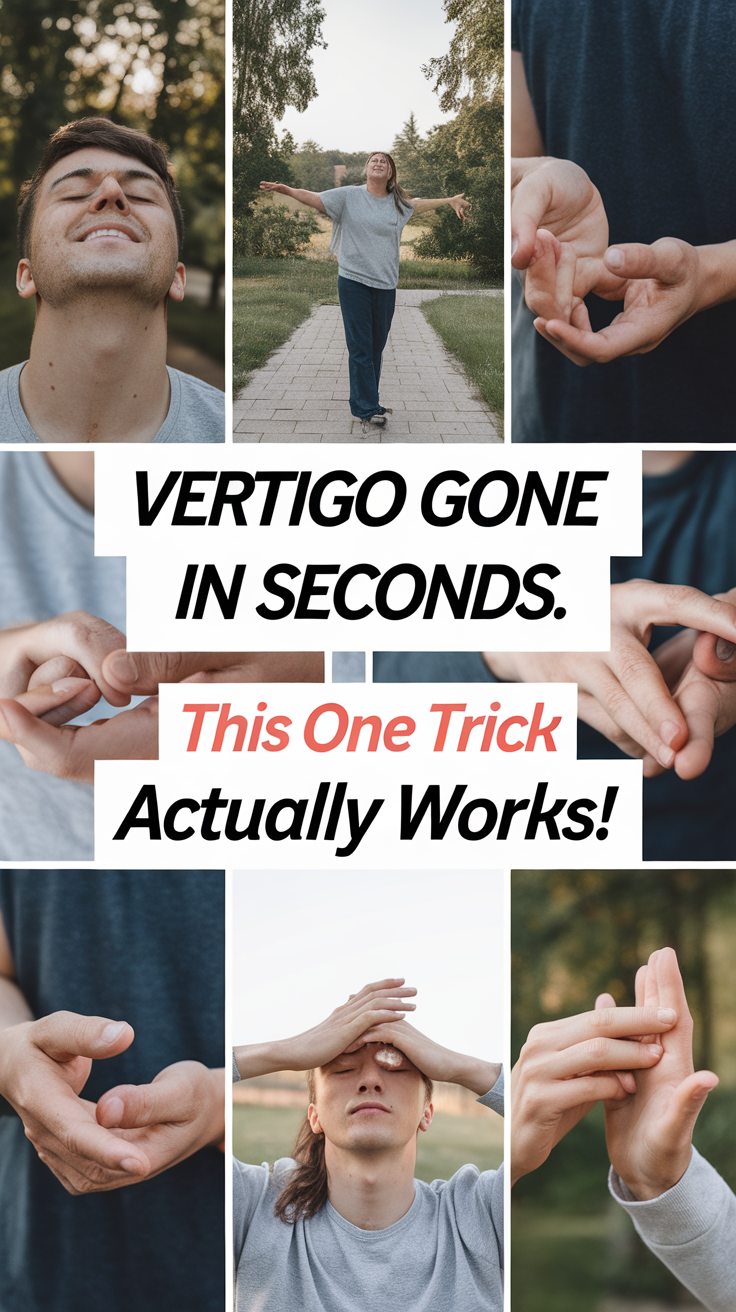Vertigo Gone in Seconds. This One Trick Actually Works!
You can stop vertigo quickly with the Epley maneuver, a doctor-approved technique that repositions displaced ear crystals causing your dizziness. This simple series of head movements has up to 95% success rate when done correctly. While you might feel temporarily dizzy during the procedure, many people experience immediate relief after just one treatment. Understanding the proper technique and timing is crucial for the best results.
Understanding BPPV: The Most Common Cause of Vertigo
When your world starts spinning without warning, you might be experiencing Benign Paroxysmal Positional Vertigo (BPPV), the leading cause of vertigo.
You’re not alone – this common condition affects millions of people, especially those over 50.
BPPV occurs when tiny calcium crystals in your inner ear become dislodged and move into the wrong part of your ear canal.
These misplaced crystals confuse your brain about your head position, triggering sudden spinning sensations that typically last less than a minute.
You’ll usually notice BPPV symptoms when you’re changing positions, like getting out of bed, looking up, or bending down.
While it’s unsettling, BPPV isn’t dangerous, and you can often treat it with simple repositioning maneuvers that your healthcare provider can teach you.
The Science Behind the Epley Maneuver
The Epley maneuver stands as one of the most effective treatments for BPPV, working by guiding those troublesome calcium crystals back to their proper location in your inner ear. When you’re experiencing vertigo, these crystals have become displaced in your semicircular canals, causing that spinning sensation we all dread.
| Movement Phase | What’s Happening | Success Rate |
|---|---|---|
| Initial Position | Crystals begin moving | 80% |
| Head Rotation | Crystals enter canal | 90% |
| Final Position | Crystals resettle | 95% |
The specific head positions in this sequence use gravity to naturally guide these crystals through your ear’s chambers. You’ll feel some dizziness during the procedure – that’s actually a good sign! It means the crystals are moving exactly as they should, making their way back home where they belong.
Step-by-Step Guide to Performing the Epley Maneuver
Understanding how to perform the Epley maneuver correctly can help you manage your vertigo symptoms at home.
You’ll need a comfortable surface and someone to assist you during your first attempts.
Start by sitting upright on your bed, turning your head 45 degrees toward the affected ear. Quickly lie back with your head still turned, positioning your shoulders on your pillow while extending your neck slightly backward.
Hold this position for 30 seconds. Next, turn your head 90 degrees to the opposite side without lifting it. After another 30 seconds, roll onto your side in the same direction your head is facing.
Finally, slowly return to a sitting position and hold for a moment. You may need to repeat this sequence three times for the best results.
What to Expect During and After the Treatment
During the Epley maneuver, you’ll likely experience brief episodes of dizziness as the calcium crystals move through your inner ear canals. This is completely normal and means the treatment is working.
Many people in our vertigo community report feeling better immediately after the procedure, while others may need a few treatments to see results.
- You might feel slightly off-balance for 24-48 hours after treatment
- It’s best to keep your head upright and avoid sudden movements
- Sleep with your head elevated at a 45-degree angle the first night
- You can return to normal activities the next day, but avoid bending down
Additional Home Remedies for Vertigo Relief
While medical procedures like the Epley maneuver are effective, several home remedies can help manage vertigo symptoms.
You’ll find relief by staying hydrated and avoiding sudden head movements. Try sipping ginger tea or taking ginger supplements to reduce dizziness and nausea.
Essential oils like peppermint and lavender can ease your symptoms when diffused or applied with a carrier oil to your temples.
You might also benefit from gentle yoga poses, particularly those that focus on balance and stability. Keep your head elevated with extra pillows while sleeping, and remember to get up slowly from lying or sitting positions.
If you’re experiencing stress-related vertigo, practice deep breathing exercises and meditation.
These natural approaches, combined with proper rest, can make a significant difference in your daily comfort.
When to Seek Professional Medical Help
Despite the effectiveness of home remedies, certain vertigo symptoms require immediate medical attention.
You’ll want to protect your health by recognizing when it’s time to see a doctor, as some symptoms can indicate serious underlying conditions that need professional evaluation.
- Severe headaches or neck pain accompanying your vertigo
- Sudden hearing loss or persistent ringing in your ears
- Double vision, difficulty speaking, or weakness in your arms or legs
- Vertigo episodes that last longer than 24 hours or cause you to fall
Don’t hesitate to reach out to your healthcare provider if you experience any of these warning signs.
While many cases of vertigo can improve with self-care, your doctor can properly diagnose the root cause and recommend appropriate treatment options to help you feel better and prevent future episodes.
Frequently Asked Questions
Can I Do the Epley Maneuver if I Have Neck or Back Problems?
You shouldn’t try the Epley maneuver with neck or back problems without consulting your doctor first. It involves specific head movements that could worsen existing conditions or cause injury.
Is It Normal to Feel Nauseous for Several Days After the Treatment?
It’s completely normal to feel nauseous after an Epley maneuver. Your body’s still adjusting to the inner ear changes. If you’re concerned or symptoms last longer than a week, consult your doctor.
How Often Can I Safely Perform the Epley Maneuver in One Day?
You can safely do the Epley maneuver three times a day, but don’t overdo it. If you’re still experiencing symptoms after a few treatments, it’s best to consult your doctor.
Will the Vertigo Come Back Even After Successful Treatment With Epley Maneuver?
Yes, your vertigo can return even after successful Epley treatment. You’re not alone – many people experience recurring episodes, but you can manage them with the same maneuver when needed.
Can Certain Medications Interfere With the Effectiveness of the Epley Maneuver?
Your medications can affect the outcome of the Epley maneuver. If you’re taking vestibular suppressants, antidepressants, or sedatives, let your healthcare provider know before trying the procedure.








